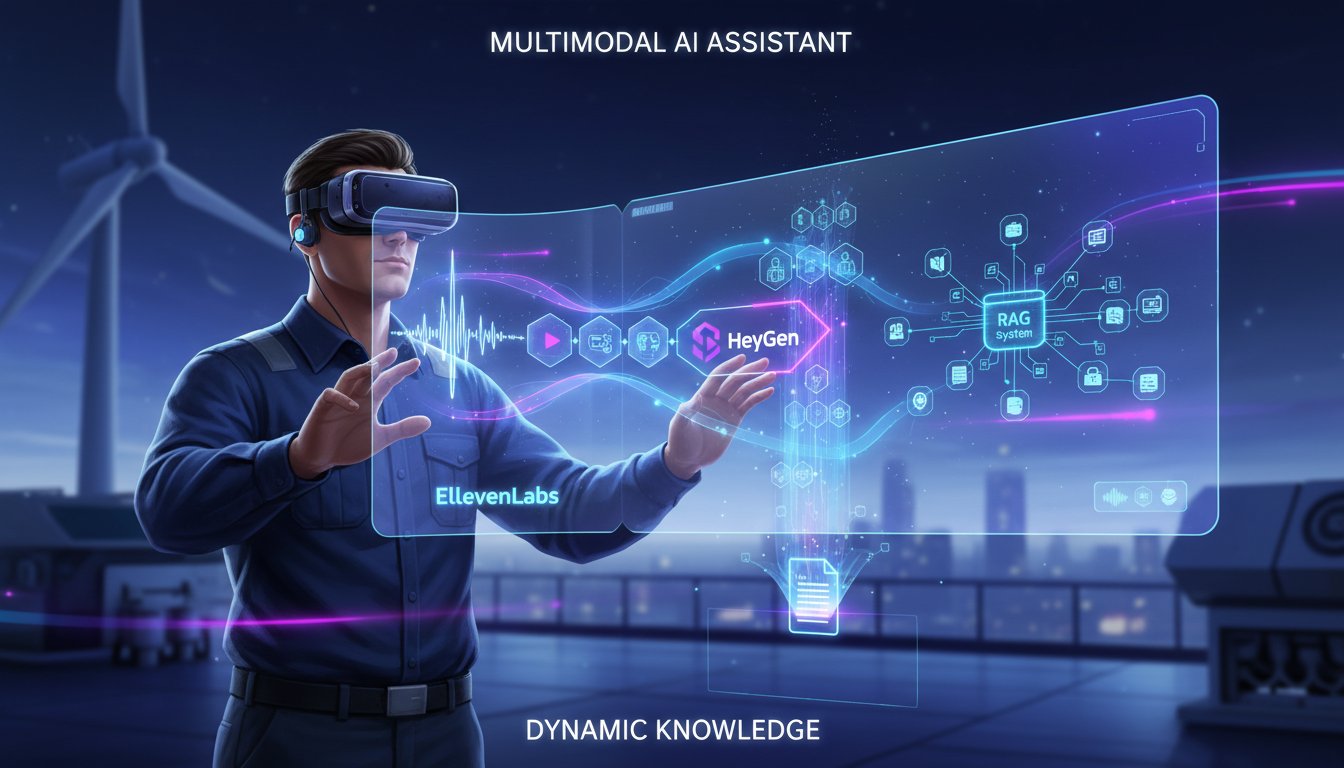Introduction: The Genesis of a Transformation
Imagine standing at the helm of one of the world’s busiest aviation hubs. Every minute, a symphony of complex operations unfolds: aircraft movements, passenger flows, baggage handling, security protocols, and resource allocation. Now, picture infusing this intricate dance with a new layer of intelligence, one that not only reacts but predicts, optimizes, and learns in real-time. This isn’t a far-off vision; it’s the reality taking shape at Kempegowda International Airport Bengaluru, where Bangalore International Airport Limited (BIAL) has embarked on a groundbreaking journey to redefine airport management through the power of Generative AI. This initiative, a strategic partnership with KPMG, represents more than just a technological upgrade; it’s a leap towards a future where airports operate with unprecedented efficiency and foresight, directly addressing the monumental challenge of managing ever-increasing operational complexity and passenger expectations.
The challenge is multifaceted. Modern airports are ecosystems teeming with data, generated from countless sources. The ability to harness this data, transform it into actionable intelligence, and do so instantaneously is paramount. Traditional systems often struggle with the sheer volume, velocity, and variety of this information, leading to reactive problem-solving rather than proactive management. This is where the promise of Generative AI, particularly when architected with principles akin to Retrieval Augmented Generation (RAG) systems, comes into play. By leveraging vast datasets to generate novel insights and automate complex decision-making processes, BIAL aims to create an airport that is not just smart, but prescient.
This blog post delves into the story behind BIAL’s GenAI leap. We’ll explore the strategic vision, the technical underpinnings of this innovative platform, and its profound implications for the aviation industry and beyond. We will examine how BIAL, in collaboration with KPMG, is developing a bespoke solution focused on real-time data processing, predictive insights, scalability, and responsible AI – cornerstones of any enterprise-grade AI deployment. As we unpack this development, we’ll also touch upon how the core concepts driving this platform resonate with the foundational ideas of RAG technology: leveraging extensive knowledge bases to generate contextually relevant and accurate outputs, thereby empowering human decision-makers. Expect to gain a deeper understanding of how enterprise AI is moving beyond theoretical applications to solve real-world, critical infrastructure challenges, setting a new paradigm for operational excellence.
H2: The Airport of Tomorrow: Confronting Complexity with Vision
Airports are no longer mere transit points; they are sprawling cities within cities, intricate hubs of commerce, logistics, and human movement. The operational demands placed upon them are immense, requiring a delicate balance of safety, security, efficiency, and customer experience. BIAL, as the operator of Kempegowda International Airport Bengaluru, one of India’s busiest airports, is acutely aware of these pressures.
H3: The Modern Airport: An Interconnected Web of Operations
The sheer scale of daily operations at a major international airport is staggering. Thousands of flights, millions of passengers, and countless pieces of cargo move through its arteries every year. Each component, from runway allocation and gate management to passenger check-in, security screening, baggage handling, and ground support services, must function seamlessly. A delay or disruption in one area can have cascading effects, impacting schedules, resources, and ultimately, passenger satisfaction. This interconnectedness makes manual oversight and traditional data analysis tools increasingly inadequate. The need for a holistic, intelligent system that can perceive, predict, and prescribe actions across this complex web is more critical than ever.
H3: The Strategic Imperative: Why BIAL Embraced Generative AI
Recognizing the limitations of existing systems and the transformative potential of emerging technologies, BIAL made a strategic decision to pioneer the use of Generative AI. The goal was not just incremental improvement but a fundamental shift in operational philosophy. This involves moving from a reactive stance, where problems are addressed as they arise, to a proactive one, where potential issues are identified and mitigated before they impact operations. According to Satyaki Raghunath, Chief Strategy and Development Officer at BIAL, this initiative is about “creating a future-ready airport that can anticipate and adapt to the dynamic aviation landscape.” The ambition is clear: to leverage AI to automate routine tasks, surface strategic insights from complex datasets, and empower staff with predictive capabilities, thereby enhancing decision intelligence across all airport functions. This forward-thinking approach is what positions BIAL at the vanguard of aviation innovation.
H2: A Synergistic Partnership: BIAL and KPMG Co-Creating the Future
The development of such a sophisticated Generative AI platform is not a solitary endeavor. It requires a confluence of domain expertise, technological prowess, and a shared vision. BIAL found this synergy in its partnership with KPMG in India.
H3: The Rationale Behind the Collaboration
KPMG brings to the table extensive experience in digital transformation, data analytics, and the implementation of cutting-edge AI solutions across various industries. Their role in this venture extends beyond that of a mere technology provider; they are strategic partners working alongside BIAL to co-create a platform tailored to the unique challenges and opportunities of the airport environment. This collaborative approach ensures that the technology is not just advanced but also deeply integrated with BIAL’s operational workflows and strategic objectives. The focus is on building a solution that is not only technically sound but also practically implementable and scalable, aligning with KPMG’s commitment to delivering tangible business value through technology.
H3: Core Objectives of the Bespoke GenAI Platform
The BIAL-KPMG GenAI platform is designed with several key objectives in mind:
- Real-time Data Processing and Analytics: The system is engineered to ingest and process vast streams of data from diverse airport sources in real-time. This capability is crucial for providing up-to-the-minute operational awareness and enabling immediate responses to changing conditions. For an audience familiar with RAG, the significance of efficiently accessing and processing large, dynamic datasets to inform generative outputs is immediately apparent.
- Predictive Insights and Pattern Recognition: Beyond simply reporting current states, the platform aims to identify subtle patterns, forecast potential disruptions (e.g., flight delays, resource shortages), and predict trends in passenger flow or operational bottlenecks. This predictive power allows for proactive interventions.
- Enhanced Decision Intelligence: By providing staff with timely, accurate, and actionable insights, the platform seeks to elevate the quality and speed of decision-making across all levels of airport management.
- Automation of Routine Tasks: Generative AI can automate various repetitive and data-intensive tasks, freeing up human personnel to focus on more complex, strategic, and customer-facing activities.
- Scalability and Flexibility: The architecture is being designed to be inherently flexible and scalable, allowing it to adapt to future growth, evolving operational needs, and the integration of new AI models and data sources.
These objectives collectively aim to transform Kempegowda International Airport Bengaluru into a model of operational excellence and innovation.
H2: Peeking Under the Hood: Technical Cornerstones of BIAL’s AI Leap
While specifics of proprietary technology remain confidential, the announcements surrounding BIAL’s GenAI platform highlight key technical pillars that are fundamental to its success. These elements resonate strongly with best practices in enterprise AI and the principles underpinning advanced systems like RAG.
H3: Leveraging Cutting-Edge Generative AI Models
At its core, the platform will harness “cutting-edge GenAI models.” This implies the use of sophisticated algorithms capable of understanding complex data, generating human-like text or insights, and learning from new information. For airport operations, this could mean generating optimized resource allocation plans, drafting communications for disruption management, or even simulating different operational scenarios to test their outcomes. The ability to generate novel solutions, not just analyze existing data, is a hallmark of true Generative AI.
H3: A Flexible and Scalable Architecture
The platform is being built on a “flexible, scalable architecture.” This is critical for an environment as dynamic as an airport. Scalability ensures that the system can handle increasing data loads and user demands as the airport grows. Flexibility allows for the integration of new technologies, data sources, and AI models over time, ensuring the platform remains future-proof. This architectural consideration is vital for any enterprise-grade system, preventing obsolescence and allowing for continuous improvement.
H3: Real-Time Data Processing: A Nod to RAG Principles
The emphasis on “real-time data processing and analytics from large datasets” is particularly relevant. While not explicitly termed a RAG system, the BIAL platform’s need to access, process, and derive insights from vast and constantly updated information mirrors a core tenet of Retrieval Augmented Generation. RAG systems enhance Large Language Models (LLMs) by grounding them in external, up-to-date knowledge bases. Similarly, BIAL’s platform must effectively “retrieve” relevant data from its operational environment and “augment” its AI models to “generate” timely and accurate outputs – be they predictions, recommendations, or automated actions. This ability to work with large, dynamic datasets is what will give the platform its operational edge.
H3: Predictive Insights, Pattern Recognition, and Trend Forecasting
The platform’s capability for “predictive insights, pattern recognition, and trend forecasting” signifies a move towards intelligent automation. By analyzing historical and real-time data, the AI can identify leading indicators of potential issues, such as congestion points, equipment maintenance needs, or resource imbalances. For instance, it might predict a surge in passengers at a specific security checkpoint based on incoming flight schedules and past flow rates, allowing management to allocate additional staff proactively. This predictive power is a key differentiator, transforming data from a historical record into a tool for shaping future outcomes.
H2: Enterprise-Grade AI: Prioritizing Security, Responsibility, and Scalability
For AI to be truly transformative in critical infrastructure like an airport, it must be built on a foundation of trust, security, and ethical considerations. BIAL and KPMG are placing significant emphasis on these enterprise-grade features.
H3: Championing Data Privacy and Responsible AI
Operating an airport involves handling sensitive data related to passengers, airlines, and operations. The BIAL GenAI platform is being developed with “stringent data privacy and responsible AI principles” at its core. This commitment ensures that data is handled ethically, transparently, and in compliance with all relevant regulations. Responsible AI practices also involve ensuring fairness, accountability, and explainability in AI-driven decisions, which is crucial for maintaining trust and ensuring that the technology serves human values. This focus is paramount, especially as AI systems become more autonomous.
H3: Ensuring Robust Cybersecurity Measures
Given the critical nature of airport operations, cybersecurity is non-negotiable. The platform will incorporate robust cybersecurity measures to protect against threats and ensure the integrity and availability of the system. As AI systems become more integrated into core operations, they can also become targets, making comprehensive security a foundational requirement for enterprise deployment.
H3: Designed for Scalable Deployment Across Diverse Airport Domains
The vision for BIAL’s GenAI platform extends to “scalable deployment across diverse airport domains.” This means the solution is not intended for a single, isolated use case but is designed to be adaptable and extensible to various functions within the airport – from airside operations to terminal management and landside logistics. This holistic approach maximizes the return on investment and ensures that the benefits of AI are realized throughout the entire airport ecosystem. The ability to scale effectively is a testament to a well-thought-out architecture and a strategic, long-term vision for AI integration.
H2: The Ripple Effect: Benefits, Benchmarks, and Broader Implications
The launch of BIAL’s Generative AI platform is poised to deliver a spectrum of benefits, not just for Kempegowda International Airport Bengaluru, but potentially for the global aviation industry and other sectors grappling with similar operational complexities.
H3: Proactively Addressing Disruptions and Optimizing Functions
One of the most significant anticipated outcomes is the ability to proactively address disruptions. By predicting potential issues, the platform can enable preemptive actions, minimizing delays and enhancing operational resilience. Furthermore, it will optimize various airport functions, from resource allocation and energy consumption to passenger flow management and maintenance schedules. This continuous optimization driven by data and AI is key to achieving new levels of efficiency.
H3: Elevating Operational Excellence, Decision Intelligence, and Customer Satisfaction
The cumulative impact of these improvements will be a marked elevation in overall operational excellence. Staff will be empowered with better decision intelligence, leading to more informed and timely choices. Ultimately, these enhancements translate into a smoother, more predictable, and more pleasant experience for passengers, directly impacting customer satisfaction. The automation of routine tasks will also free up human capital to focus on higher-value activities, including direct passenger interaction and strategic problem-solving.
H3: Setting New Global Benchmarks and a Paradigm Shift
BIAL’s initiative is ambitious and aims to set “new global benchmarks in aviation.” By successfully integrating a comprehensive GenAI platform into its core operations, BIAL is demonstrating a new model for how airports can be managed. This represents a paradigm shift, moving the industry beyond traditional operational methods towards an AI-driven future. The learnings and successes from this project will undoubtedly influence how other airports and large-scale infrastructure operators approach AI adoption.
H3: The RAG Connection: Intelligent Generation from Vast Data
Revisiting the connection to RAG principles, BIAL’s platform exemplifies how leveraging vast amounts of domain-specific data can fuel intelligent, actionable outputs. While the platform may encompass various AI techniques, its core function of processing extensive information (the ‘retrieval’ aspect, in spirit) to generate predictive insights and optimized plans (the ‘augmented generation’ aspect) aligns perfectly with the philosophy that drives RAG. For “Rag About It” readers, this real-world, high-stakes application underscores the immense potential of systems that can intelligently synthesize information from large corpora to solve complex problems. It highlights the practical value of grounding generative capabilities in rich, contextual data to ensure relevance and accuracy – a central theme in enterprise RAG development.
Conclusion: The Sky is Not the Limit
BIAL’s venture into Generative AI with its bespoke platform, developed in partnership with KPMG, is more than just an isolated tech project; it’s a bold statement about the future of aviation. By tackling the immense complexity of airport operations with cutting-edge AI, BIAL is not only aiming to enhance its own efficiency and passenger experience but is also charting a course for others to follow. The emphasis on real-time data processing, predictive capabilities, enterprise-grade security, and responsible AI principles showcases a mature and strategic approach to technology adoption. This initiative effectively demonstrates how AI can move from a buzzword to a core enabler of operational transformation in critical infrastructure.
The story of BIAL’s GenAI leap is a compelling example of innovation in action, showcasing how a clear vision, strategic partnerships, and advanced technology can converge to solve tangible, large-scale challenges. As this platform matures, it will undoubtedly offer invaluable lessons for any organization looking to harness the power of Generative AI and RAG-like principles to turn data into a strategic asset. The journey has just begun, but the trajectory suggests that for BIAL, and indeed for AI in complex operations, the sky is truly not the limit; it’s the starting point of a new era of intelligent possibilities.
CTA: Join the Conversation
BIAL’s innovative GenAI platform marks a significant step for AI in critical infrastructure. We’re keen to hear your perspectives:
- What are your thoughts on the application of Generative AI in managing complex environments like airports? Are there other critical infrastructure sectors you believe are ripe for such AI-driven transformations?
- How can the core principles demonstrated by BIAL’s platform – particularly its focus on real-time data processing, predictive insight generation, and scalable architecture – inform the development and deployment of enterprise-grade RAG systems in other industries?
- The BIAL-KPMG collaboration emphasizes responsible AI and robust governance. In your view, what are the most critical considerations for ensuring ethical and secure AI deployment in these large-scale, high-impact scenarios?
Share your insights and experiences in the comments below. Let’s explore the evolving landscape of enterprise AI together!




